

Interview with
Jorgo Chatzimarkakis,
CEO Hydrogen Europe

Jorgo
Chatzimarkakis is the CEO of Hydrogen Europe, a European association representing
the hydrogen industry and its stakeholders. Prior to joining Hydrogen Europe,
Jorgo previously worked in the planning department of Germany’s Foreign Office
and at Infineon Technologies. Between 2004 and 2014 he was a Member of the
European Parliament, where he was also a member of the Industry, Technology,
Research and Energy Committee (ITRE) contributing to creating the groundwork
for the Parliament’s first and the second Joint Undertaking on hydrogen and
fuel cells.
Jorgo was
awarded Hydrogen Person of the Year at the World Hydrogen Awards in 2022 and
was described as ‘a major player promoting hydrogen in Europe and world-wide,
accelerating collaboration and industry development’. Jorgo was born in
Duisburg, Germany. He holds German and Greek nationality, and has a degree in
political science from the University of Bonn.
Ensuring a central role for green and
low-carbon
hydrogen is crucial for Europe’s energy transition.
First, it will enable Europe to decarbonise the
so-called ‘hard to abate’ industrial sectors that will otherwise not benefit
from direct electrification. This includes vital manufacturing sectors such as
the steel industry, as well as the cement and fertiliser segments. Securing a
healthy hydrogen value chain in Europe will permit us to decarbonise our energy
sector faster and more assuredly than with just pure electrification.
Exploiting new hydrogen sources will also allow Europe
to secure its energy dependence. Advancements towards this important development
would mean the Continent will no longer have to rely on the import of fossil
fuels from the likes of Russia, an issue that has come into sharp focus with
recent events in the Ukraine.
In the context of
hydrogen, we see the biggest impact taking place in the power and transport
industries.
The latter is
particularly pertinent for RINA, as hydrogen offers the maritime transport
sector an opportunity to significantly decarbonise its fuel sources. Europe’s
FuelsEU Maritime legislative proposal put forward last year will play a key
role.

To support the uptake of sustainable maritime fuels, the EC proposes to limit the carbon intensity of the energy used on board ships. The proposal sets up a fuel standard for ships and introduces a requirement for the most polluting ship types to use onshore electricity when at berth. The legislative outcome of this proposal will work hand-in-hand with the simultaneous proposals to include the maritime sector in the EU emissions trading system.
Looking to the
future, the long-term outlook for decarbonisation is positive. New EU
legislation will set ambitious targets which go a long way to meeting the bold objectives
outlined in the REPowerEU plan.
In the context of
new energy sources, policymakers are finalising several important pieces of
legislation as regards the use of renewable hydrogen, low-carbon hydrogen and
Renewable Fuels of Non-Biological Origin (RFNBOs).
The focus now is
on how to achieve the short-term steps needed to secure the long-term
objectives. A key goal for the short term is creating regulatory certainty for
the sector and the industries affected. In the longer term, the focus should be
on meeting targets and establishing Europe as the bona fide leader in hydrogen.
Within this
context, RINA is a valued member of Hydrogen Europe. HE is the leading
organization
representing
Europe-based companies and stakeholders committed to moving towards a carbon neutral
economy. RINA’s perspective on the maritime transport sector is very important
to us as we work to build policies geared towards decarbonisation in the sector.

Interview with
Henrique
Pinto Correia and Diogo
Vasconcelos, EEM - Empresa
de Electricidade da Madeira

Henrique
Pinto Correia graduated with an MSc in Energy and Environmental Engineering
from the Faculty of Sciences of the University of Lisbon in 2016. He completed
a curricular internship at the Networks and Energy Analysis Unit of the National
Energy and Geology Laboratory (LNEG) related to the RES in the Iberian Market.
Since 2017, Henrique has been working directly in the Madeira regional
electricity sector, and he is currently integrated in the Directorate of Studies and Planning at
EEM (Empresa de Electricidade da Madeira
S.A.), where he is directly involved in European projects, Electric Mobility
and Energy Quality. His professional areas of interest include the integration
of electric vehicles as flexibility assets in the electrical sector, renewable
energies, energy efficiency and HVAC.
Diogo
Vasconcelos has a degree in Electrical and Computer Engineering and has worked
across several different disciplines in his professional career. Initially he
worked in the automotive industry in both Brazil and Germany. Subsequently, in
2004 he started his collaboration with EEM ((Empresa de Electricidade da
Madeira S.A.), Madeira’s public electricity company, in the areas of renewable
energies, environment and sustainability, and natural gas. Since 2011, Diogo’s
roles have focused particularly on electric mobility and managing several
European Union co-financed projects. Accumulating other functions in the
Directorate of Studies and Planning, he was the project manager (PM) of the first two large scale
BESS installed in the Madeira Archipelago (one in Porto Santo and the
other in Madeira), which was co-financed by EU funding, and he is currently the
PM of Porto Santo Island’s second large scale BESS. Diogo is committed to promoting
technology and innovation in the areas of mobility and energy.
At EEM-Empresa de Electricidade da
Madeira S.A.,
we want to be at the cutting edge of technology and to know which technologies
are available in order to solve or minimize potential constraints – from metering
systems, to planning, to generation. This was one of the reasons that we signed
up to the Smart Islands Energy System (SMILE) project launched in 2017, and
funded by the European Union's Horizon 2020 research and innovation programme.
The project was created to demonstrate and test
9 different smart grid technologies on three islands. The ultimate goal of the
project was to make the products and solutions developed market-ready and set
for rollout anywhere in the world. RINA Consulting was responsible for the
overall Project Coordination and Management, as well as the activities related
to ‘smartening’ the distribution grid.
EEM believes that smart grids are a key step in
the transition towards clean and affordable energy. By monitoring energy flows in real time,
‘prosumers’
can match locally produced energy to their own demand, automatically reducing
costs and avoiding an imbalance in the grid. This is a particular issue for an
isolated electrical grid like that on the island of Madeira (Portugal).
EEM generates, transports, distributes, and commercializes
electricity, which made it all the more important to have a partner like RINA,
which brings multi-disciplinary expertise to the table across the range of energy
generation, storage distribution and digital services.
Both islands in the Madeira archipelago are
isolated systems, so when more renewable assets are added to the system, grid
stability and security of supply must be guaranteed. Photovoltaic production,
which is directly related to solar irradiation, for example, does not
correspond with peaks in demand and the unpredictable nature and intermittence of
this type of energy generation can be difficult to manage when there are no
control systems (such as in very small-scale installations). This creates
several different kinds of issues (frequency and voltage deviations, harmonics,
among others). Madeira expects to have an approximate 50% share of Renewable
Energy systems in the energy mix by the end of 2025 so it is a real issue.
Island locations were chosen for the SMILE project
due to the unique challenge of providing smart grid solutions for off-grid locations,
or in areas where the grid is not easy to manage and where the connection to
the main grid is less resilient. Madeira is the only island in the
project that is 100% electrically isolated from the mainland, and all energy
consumed on the island must be generated on the island itself. It is also very
remote, at 1,000 km from the Portuguese mainland, with a population of just 251,000
residents. These elements bring significant challenges.
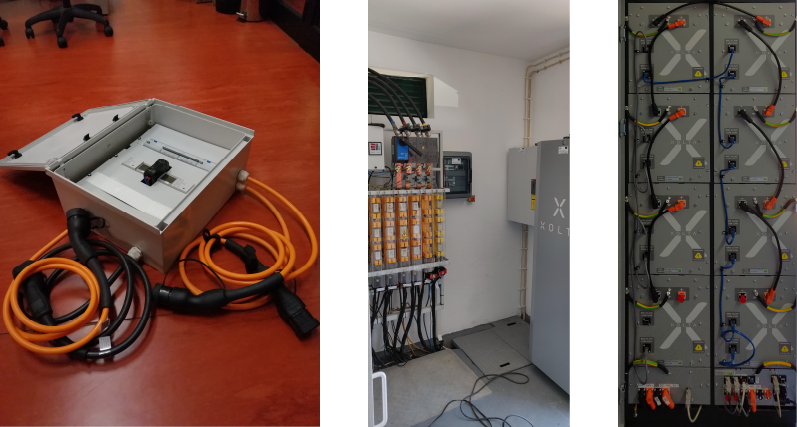
In total, Madeira carried out 5
pilot schemes,
all integrated in one energy management system. Two of these 5 pilots are
related to the optimization of self-consumption, which involved an evaluation
of the unused energy surplus in eighteen existing test bed self-production
sites. Seven battery electrical storage systems (BESS) were installed in the
five sites with the most surplus (4 domestic and 1 commercial).
A third pilot scheme involved providing
frequency and voltage support, by selecting the grid with the highest ratio of
PV peak power installed and the lowest load consumption. The aim was to explore
the storage of surplus energy produced, preventing the power flow from the LV
level to MV, while ensuring grid support by increasing the energy quality parameters
diminishing the limits established by the EN 50160:2010.
Finally, in the last 2 pilot schemes dynamic
smart-charging was tested in the Tukxi Tours private charging site and in the EEM
headquarters’ garage in order to change the current rate output of existing
chargers and a charging management system. Smart electric mobility is still
underexplored in Madeira but electric vehicles are our future and the project
will help Madeira expand its electric vehicle network going forward. Due to the
COVID outbreak, Tukxi Tours ceased operations. To overcome this, a digital-twin
was done to test the smart-charge algorithms.
As part of the project, user interface dashboards
from the energy management system were created showing real-time consumption,
with the ability to search by specific date and appliance. Such monitoring
systems are fed by data retrieved by plug-ins that are used in household
appliances. These systems harness the power of ‘demand side management’. By
giving end users more knowledge, it enables them to adapt their consumption,
which ultimately contributes to energy efficiency. For us, maximising energy
efficiency decreases the CO2 emissions in the Island.
RINA was a key partner for us in the project,
providing strong leadership and a bridge between the other partners in the
project, and with the European Union. This support was vital for a relative
beginner to Horizon 2020 such as EEM. In its role as project coordinator, RINA
was also able to provide funding advice, assisting with the application for EU
funds and subsequent financial reporting.
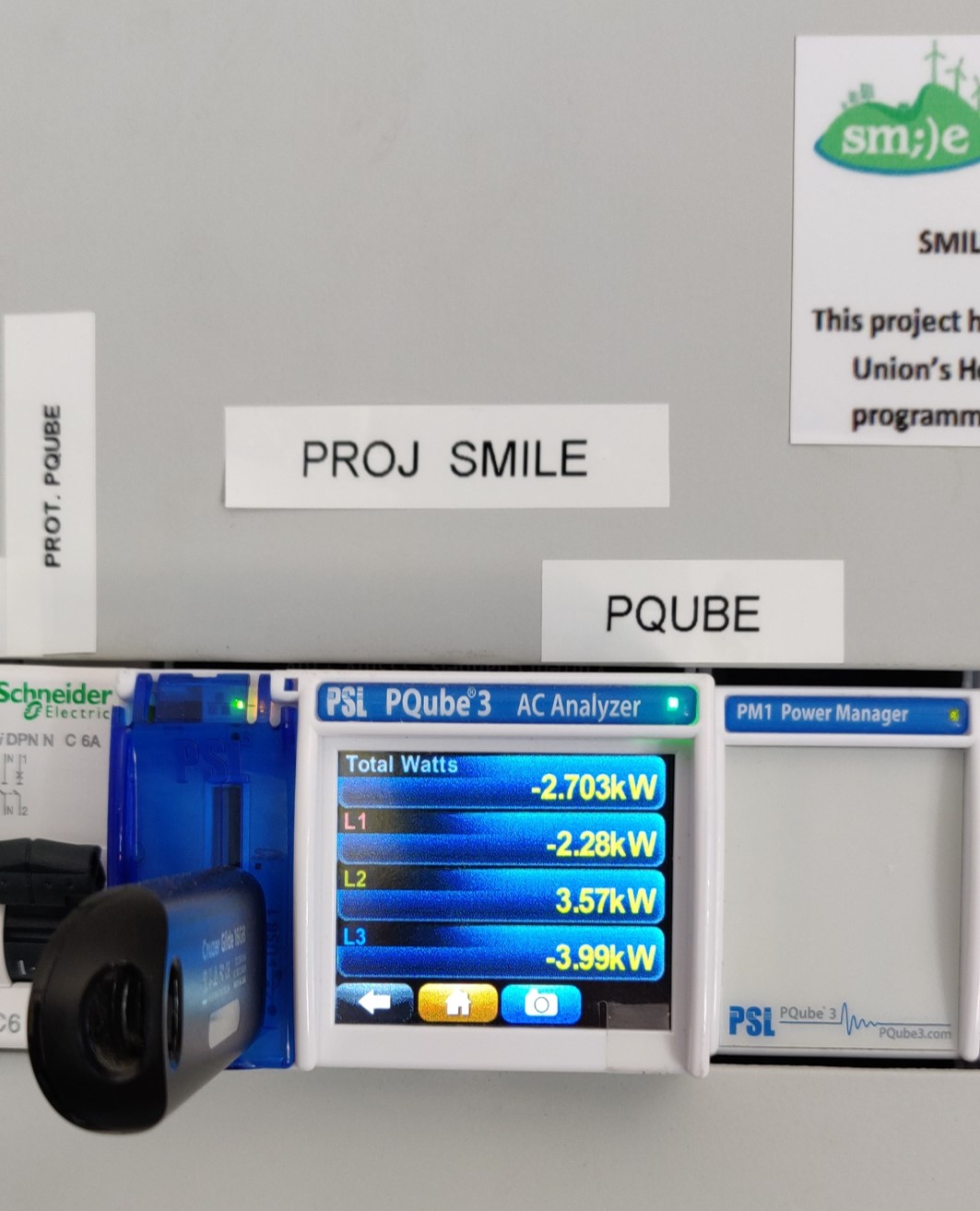
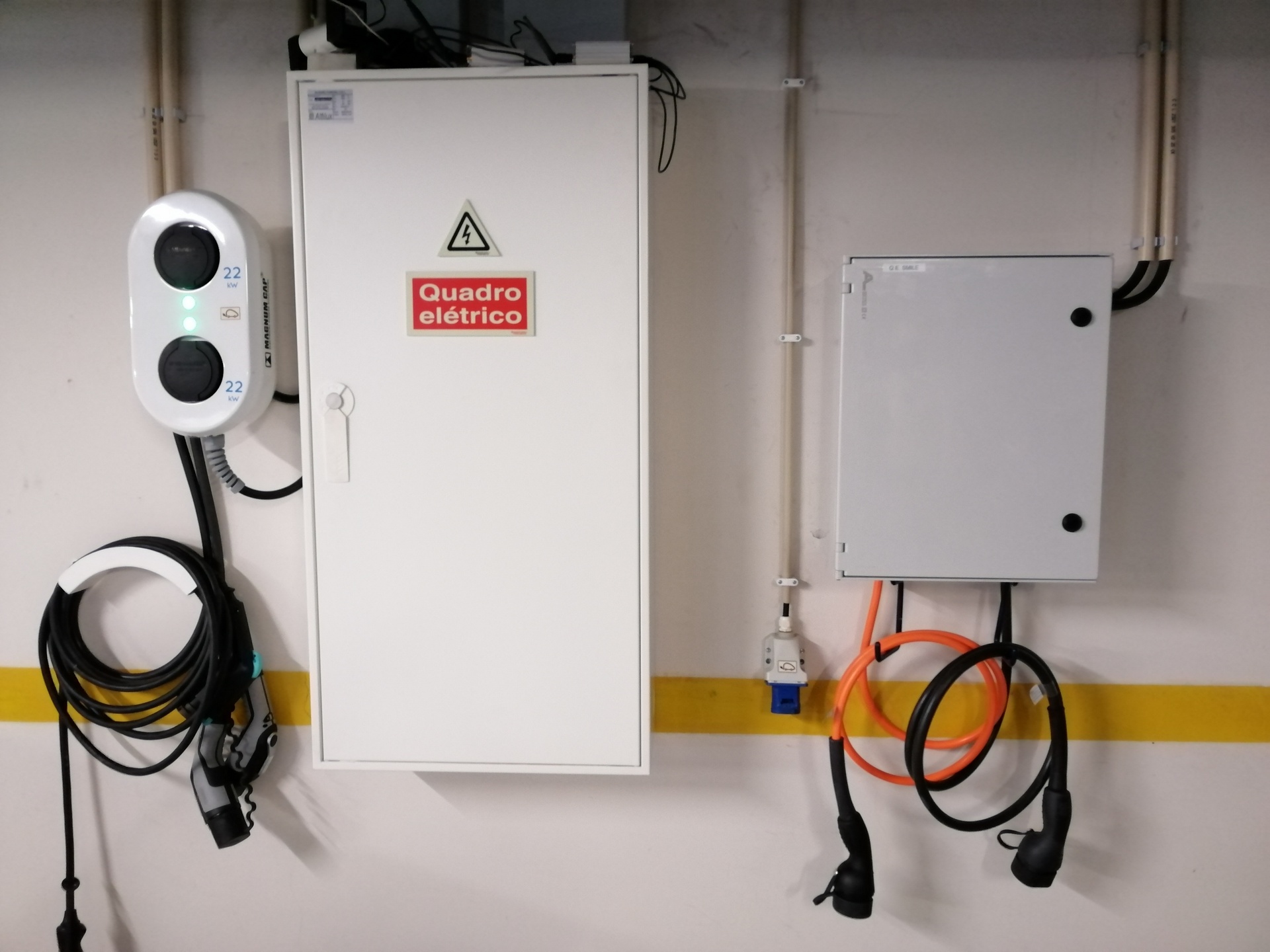
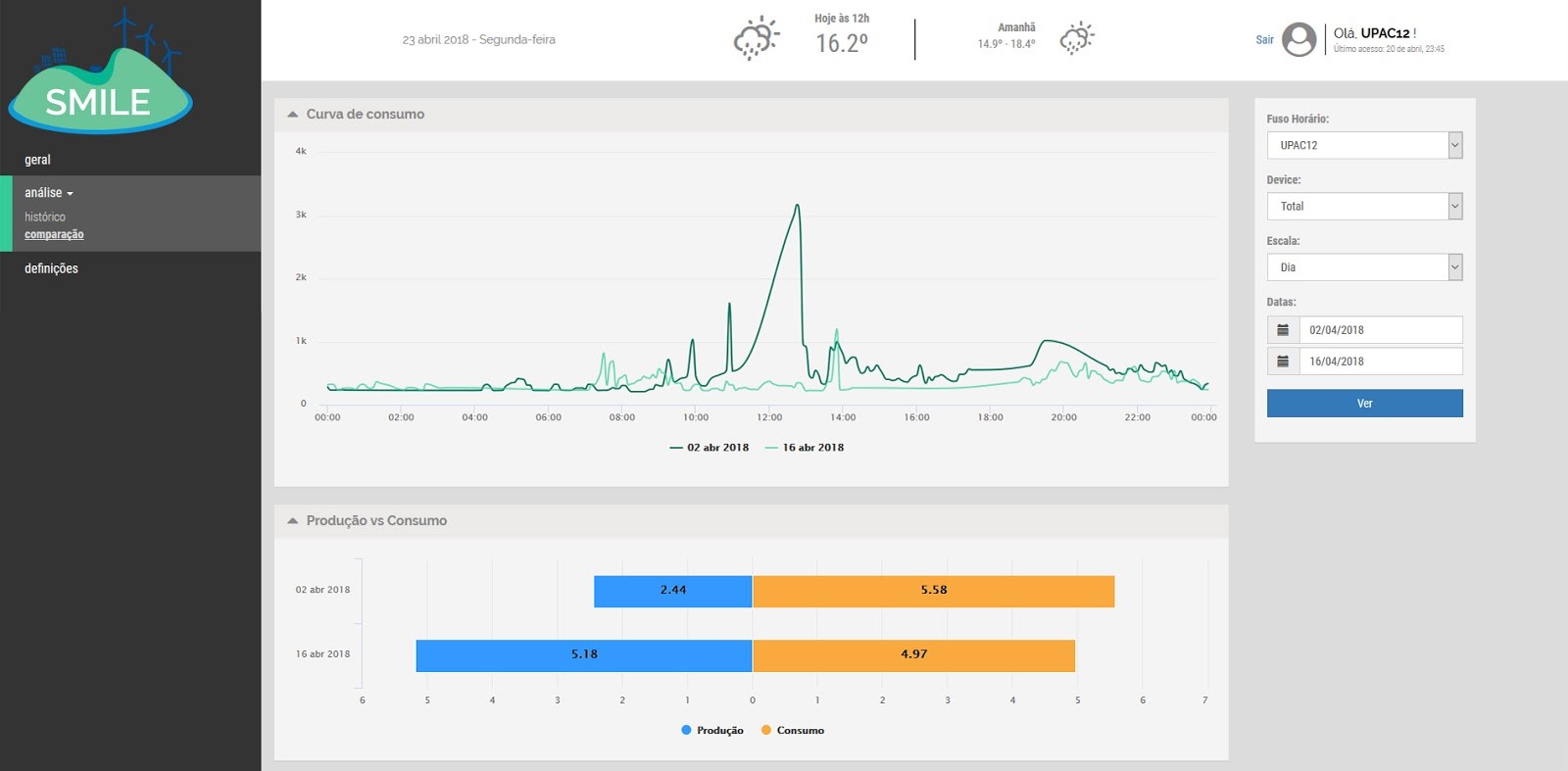
Interview with
Christoph Schladoer, Vice President Decarbonisation Carnival Maritime

Christoph
Schladoer studied Marine Mechanical Engineering in Hamburg. During a period in
scientific research on an alternative scrubber technology, he achieved a PhD.
After that, he worked for a shipyard designing energy supply systems and
exhaust treatment solutions for offshore, heavy lift and passenger vessels.
In 2015,
Christoph joined Carnival Maritime and built up a department managing large
technical retrofit and upgrade projects on cruise ships.
Since early
2022, he has led a newly-created department focusing on the pathway towards a
climate neutral cruise fleet operation. His focus areas are R&D, fuel
strategy, energy management, and data analytics within the Costa Group,
Carnival Corporation and across the maritime industry.
In the shipping
industry, the energy transition currently turns on two axes. In the short-term,
effective ship operation is the key to reducing fuel consumption and
consequently the emission of greenhouse gases.
Digital tools and
intelligent energy management systems can utilize the fuel and energy streams
on board in smart ways, maximising results. With this approach, shipowners and
operators can operate their fleets to optimise overall energy output.
In the medium to
long term, as soon as alternative fuels are available at commercial scale, the
transition to new energy sources will start.
Biogenic fuels can enable significant GHG avoidance in this decade, through drop-in
fuels (biodiesel, biomethane) and with technical retrofits (biomethanol in
engines and fuel cells).
Due to the limited
feedstocks for biofuels, a transition to e-fuels will be required. Alternative
fuels will act as hydrogen carriers, while the carbon cycle needs to be closed
over the lifetime of a fuel.
Carbon capture on board cruise ships is unlikely to
solve the problem of GHG emission release. But it can take a role in the avoidance
of remaining emissions from sustainable fuels.
In the battle against climate change, regulation will
be key. The shipping and aviation industries are already working on concrete plans
to find solutions to reduce their emissions without affecting their business
models.
Therefore, it is crucial that regulators, in Europe
and elsewhere, establish a framework that allows the production of renewable
energy in sufficient quantities.
There has been much discussion in Europe about energy
and technology independence. Both are important. Cooperation between companies
is the key to fostering and enabling technologies. This will build up demand and
lead to the creation of infrastructure while securing feedstocks for the
sector.
Energy independence must be dealt with at another
level. The
challenges for the maritime industry have to be solved on an international
level. Energy independence affects the whole of Europe, whereas technology
independence is a sector-specific topic.
In our roadmap to
decarbonisation RINA plays an important role. Our collaboration already includes
both work on R&D topics, and on projects where new technology is introduced
into the fleet.
RINA is a trusted
partner and we rely on the society to develop safe designs and perform all the
relevant assessments during the introduction of new fuels and systems. These
new systems impact both ship design and operation.
In addition, RINA
supports the certification and compliance objectives required by the new
regulation, both at a European and IMO level.
RINA is already
acting as a facilitator when it comes to new technology. By creating frameworks
that support early movers in their ambitions, RINA can enable important
developments.
This support includes
a flexible approach towards demonstrator projects, the application of
developing regulation in a feasible and timely manner, and an open mind to
alternative solutions.
It is this
approach that will help the shipping industry move more quickly and effectively
towards the long-term goal of zero emissions.
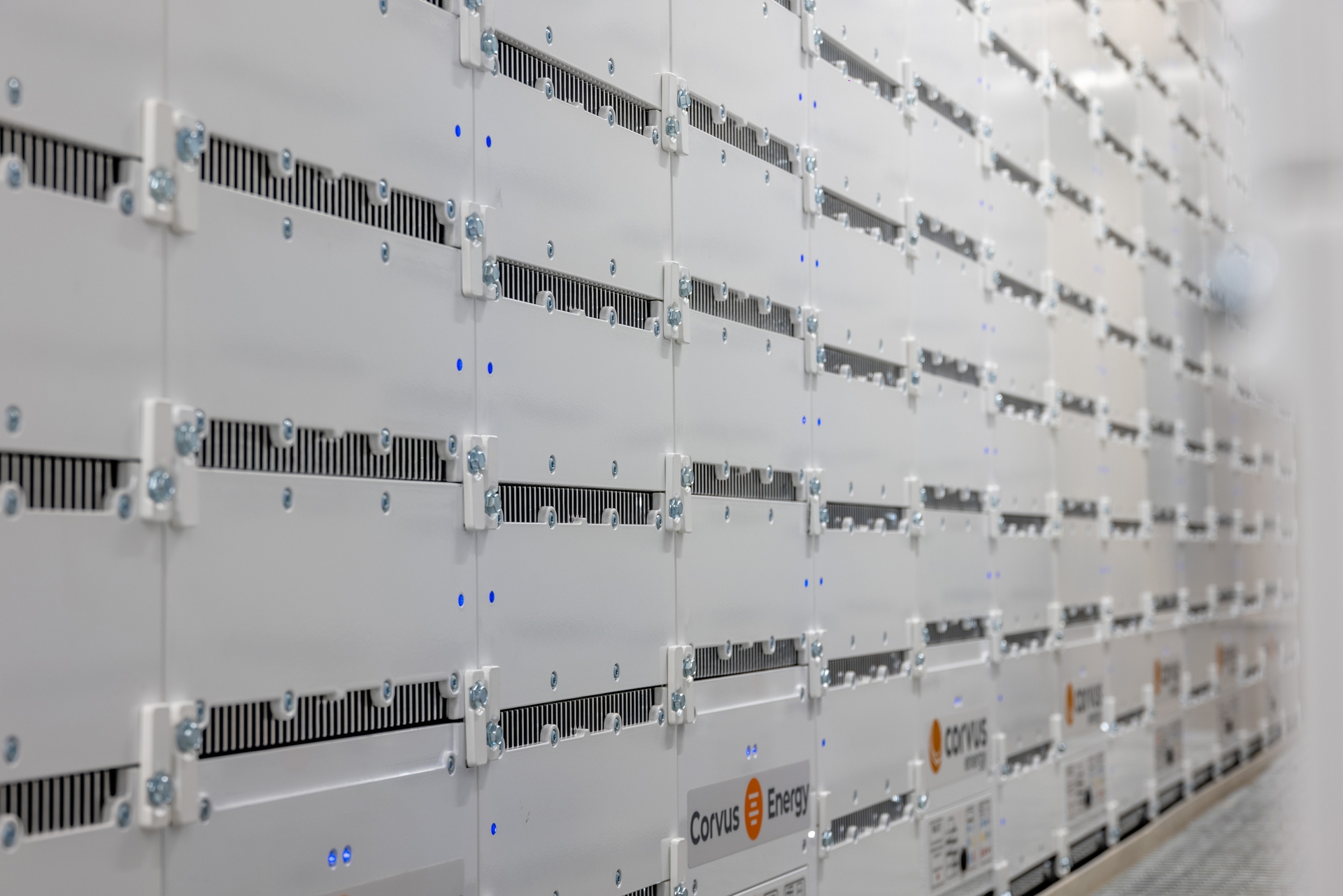
Retrofit of 10 MW battery storage system on AIDAprima
Interview with
Alessandra Barocci,
Environment and Sustainability Manager of Acciaieria Arvedi
S.p.A.

Alessandra Barocci is a Biologist
and the Environment and Sustainability Department Manager of Italian steel
manufacturer Acciaieria Arvedi Spa.
She is a Professor
of Natural Sciences and has worked as an environmental consultant for leading steelmaking
and waste management companies since 1997.
She specialises
in environmental impact assessment procedures, together with sustainability and
circular economy projects in various manufacturing sectors.
In the
European Union, iron and steel production is responsible for about 5% of all greenhouse
gas emissions. Steel can be manufactured from an integrated route (with a blast
furnace) which produces “virgin” steel starting from non-renewable raw
materials such as iron ore and coal. This accounts for approximately 60% of
steel produced. The remaining 40% is produced with recycled scrap using an
electric furnace.
In the
process of using a blast furnace, the production of CO2 per tonne of steel is
around 1,900 kg, while the current average intensity of CO2 using the electric
furnace route is from 200 to 300 kg of CO2 per tonne of steel, thus about 80%
less than the integrated route.
For steel
production from an electric furnace, carbon neutrality and the goals of the
Paris agreement are direct and realistic targets and can be achieved by reducing
energy consumption, together with procuring renewable energy, increasing
recycled scrap in the charge, and capturing the technically unavoidable CO2
residual.
For the
blast furnace route, climate neutrality is something much more complex and
requires a complete review of the production process using new hydrogen
technologies which aim to replace the natural gas used in direct reduced iron
(DRI) with green hydrogen (H-DRI).
Acciaieria Arvedi is a steel works that uses electric furnaces, a
technology chosen in 1992 by our Chairman Giovanni Arvedi who, with a strategic
vision, adopted an extremely innovative production process which has allowed
the company to produce flat rolled steel using recycled material and with low
energy consumption.
Today Acciaieria Arvedi SpA uses over 70% of scrap metal in its charge
mix, using self-produced and purchased renewable energy for a scope 1 and scope
2 carbon intensity (quantified according to GHG PROTOCOL) of about 118 kg per
tonne of steel produced.
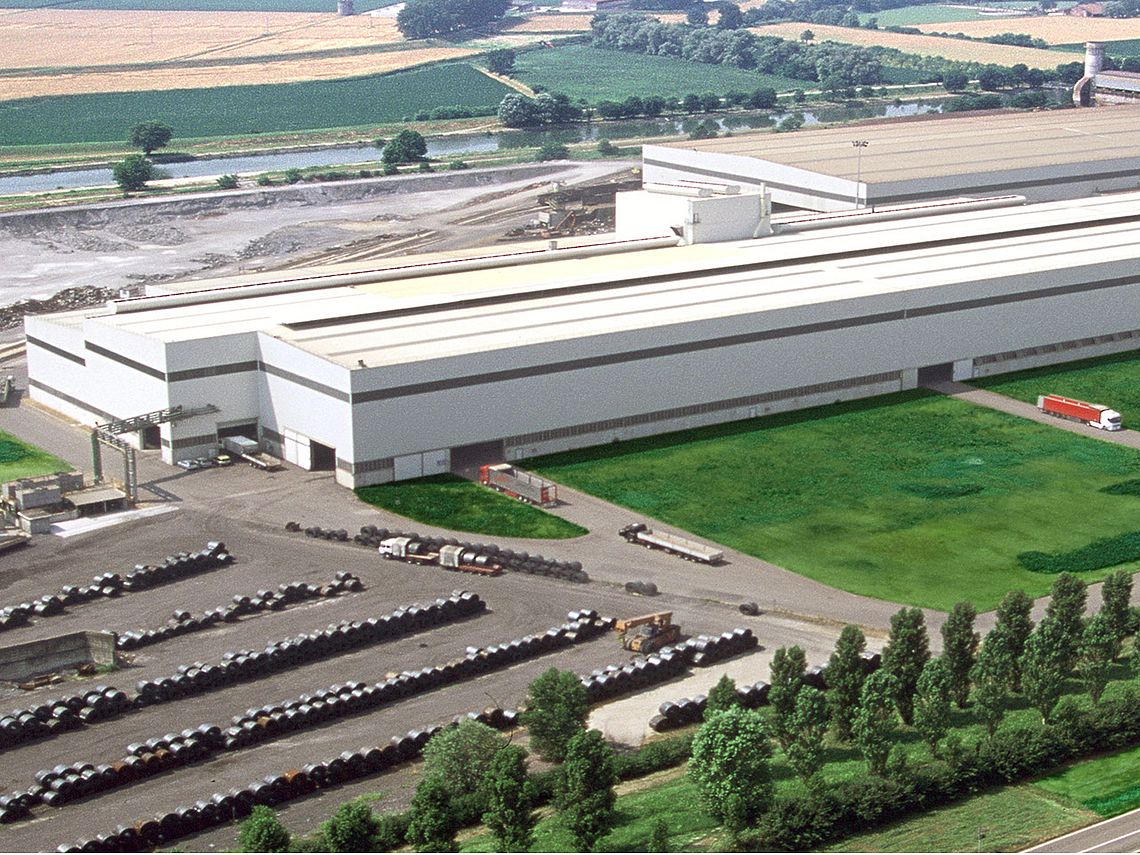
Our relationship with RINA has been crucial to conducting and
achieving
our decarbonisation.
Our collaboration began with a serious and thorough verification of the
accounting of our emissions and continued with the design and construction of a
Digital Platform for the control and traceability of the steel produced. During this
collaboration we appreciated the
professionalism of the people involved, their intellectual seriousness and the
rigorousness of their judgement.
We expect this relationship with RINA to further consolidate; the
challenges awaiting us are very important and we need a guide who can keep us
firmly on the right path towards complete climate neutrality.
Going forward, the crucial sectors that will be most impacted in the
European Union’s path to climate neutrality besides the steel sector will be
the glass, paper and cement sectors, all with so-called energy-intensive
processes.
Meanwhile, the main strategic action that must be undertaken, besides
the reduction of greenhouse gas emissions with the reviewing of the various
production cycles, is undoubtedly the technically necessary Carbon Capture and
Storage (CCS/U).
Our company is also conducting experiments in this sense, even though
time is still needed for their application.

Interview with
Stefano Fasani, Open-es
Program Manager and Head of Supplier Sustainability, Coordination &
Development at Eni
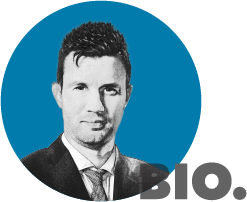
Stefano was born in
Lodi, Italy, and subsequently graduated in Computer Engineering at the
Politecnico di Milano. He joined ENI in 2019 as Head of Procurement,
Innovation, People Knowledge & Change. Over time, he has held various
positions of responsibility for Procurement and Market Intelligence activities
in the Digital & Technology field, dealing with, among other things, the
design and implementation of a new sourcing model dedicated to Open Innovation.
Since 2020, Stefano
has been in charge of the Open-es initiative, a digital platform-based alliance
which brings together the industrial, financial and associated industries to
support companies on the road to sustainability through collaboration,
measurement and growth.
Achieving the long-term goal of
sustainable
development will require a far-reaching transformation of today’s economic,
industrial and social systems. This is a process in which companies - from
large industrial groups to small and medium-sized enterprises - are the main participants.
The main challenge that companies face today is the
bureaucratic burden of how to answer stakeholders’ various questions on ESG
performance without having a clear and realistic vision on the skills and
actions needed to improve their corporate sustainability profile.
These questions are coming from many stakeholders including,
for example, customers in procurement processes, banks in financial relations, and
institutional bodies with oversight of the companies or providing industry support.
Out of this need came the Open-es Alliance, a system
initiative which brings together industry, finance, and institutions to
facilitate the process of measuring, sharing, and developing ESG performance.
The Alliance operates through a digital platform which
is open to all. It is a unique platform, in which the component of
sustainability data sharing is accompanied by a particular focus on the theme
of growth and collaboration between companies, through a simple and flexible
approach.
Launched by Eni with the Boston Consulting Group and
Google Cloud at the beginning of 2021, Open-es already counts more than 10,000 participating
companies and includes important Italian and international companies as
partners such as Iveco Group, WeBuild, Snam, TIM, Accenture, Autostrade per
l'Italia, Saipem, KPMG, Baker Hughes, RINA and illimity Bank.
It is also backed by associations such as
Confindustria, Assolombarda, Confimprese, Assorisorse, and reference institutes
from the world of science and research such as the ESG European Institute, SDA
Bocconi and LUISS.
It is a community that through discussion,
collaboration and the identification of priority actions is contributing to the
sustainable development of the entire ecosystem.
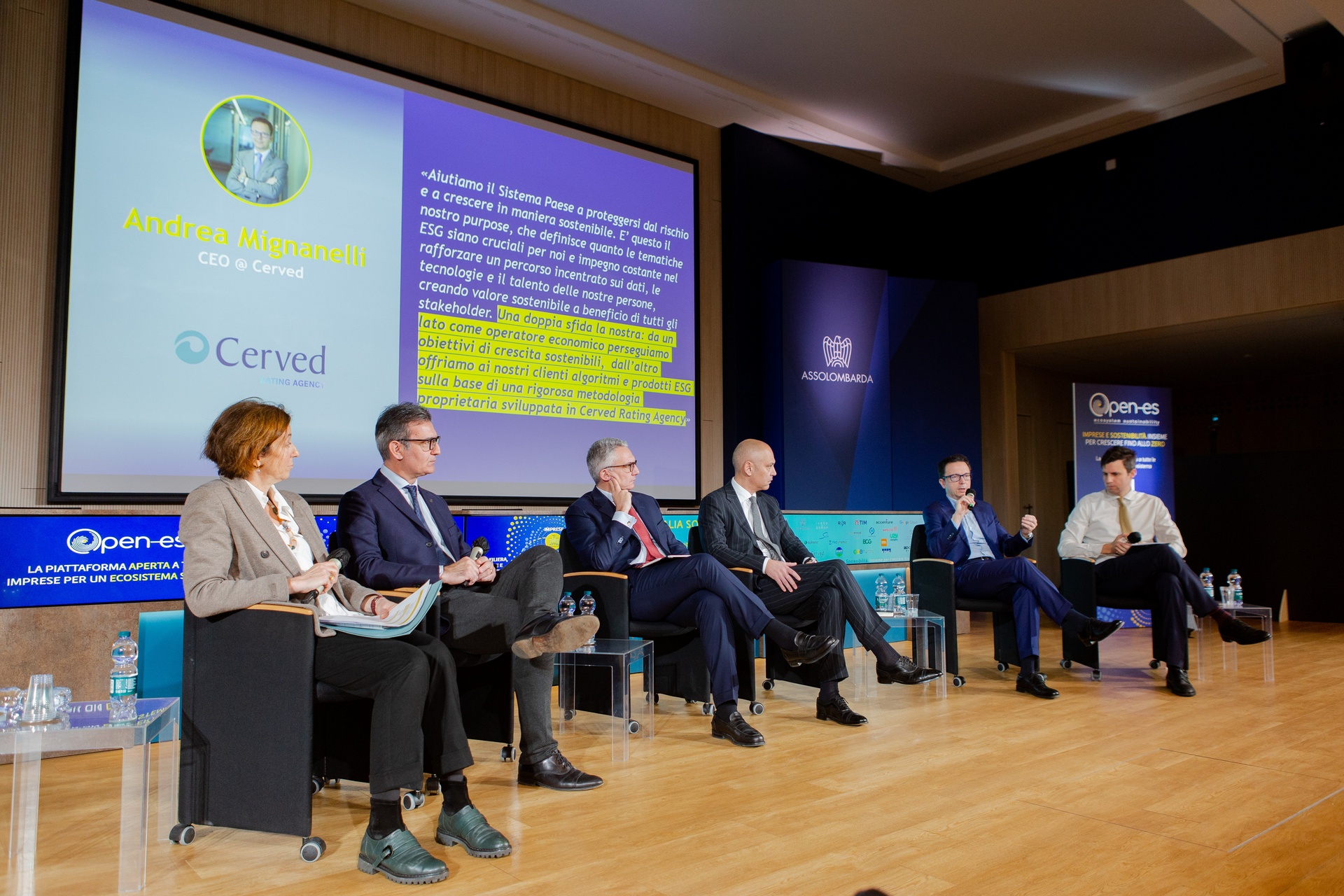

The creation of this open and collaborative
ecosystem,
without technological or knowledge barriers, makes it possible to focus the
efforts and investments of all players on sustainable development initiatives,
and the improvement of the ESG performance within the industrial and financial
system.
Open-es expects to grow further in the coming years; we
want to make the alliance a place for everyone, by involving the widest number
of companies and sectors.
While industrial participation is already significant, we
will continue to push on this front, by asking large and medium-sized
enterprises to invite and involve their suppliers, and by strengthening the
active participation of foreign supply chains.
We also see growth in the financial sector as an
important goal. We believe that Banks and Insurance companies play a key role in the
sustainability path and in the coming months we expect to announce some important
news in this regard.
Indeed, the ESG profile of
companies is now being requested both by procurement functions in industrial
relations and by financial and insurance institutions in exchange for access to
their services.
The financial sector also has
an important role to play as an enabler and accelerator, through the financing
of the investments companies need to achieve their sustainable business
development programmes.
As mentioned, RINA is an
important partner in the alliance, and the collaboration agreement between ourselves
and the company has reinforced the systemic and open spirit of the initiative.
Thanks to this partnership,
participating companies’ ESG assessments are enriched by the verification of
data flows that guarantees the consistency, immutability and integrity of the
data, a central issue for the reliability of their sustainability profile.
Looking forward, we are now
working with RINA to create another tool for companies in the Open-es
Community: a Cyber Security Risk Assessment.
This is a core theme for a
competitive and modern industrial system. In short, companies will be able to
receive an assessment of the risk coefficient to which the company might be
exposed, and the economic quantification of a possible cyber threat. They will
also have access to an action plan on how to deal with possible critical
issues.
This is a further building
block in the overall design of Open-es, which aims to integrate a network of
services and solutions that can provide concrete answers on a single platform
to help companies with their business development. RINA is providing support to
all companies on the platform by measuring and refining their approach to ESG.